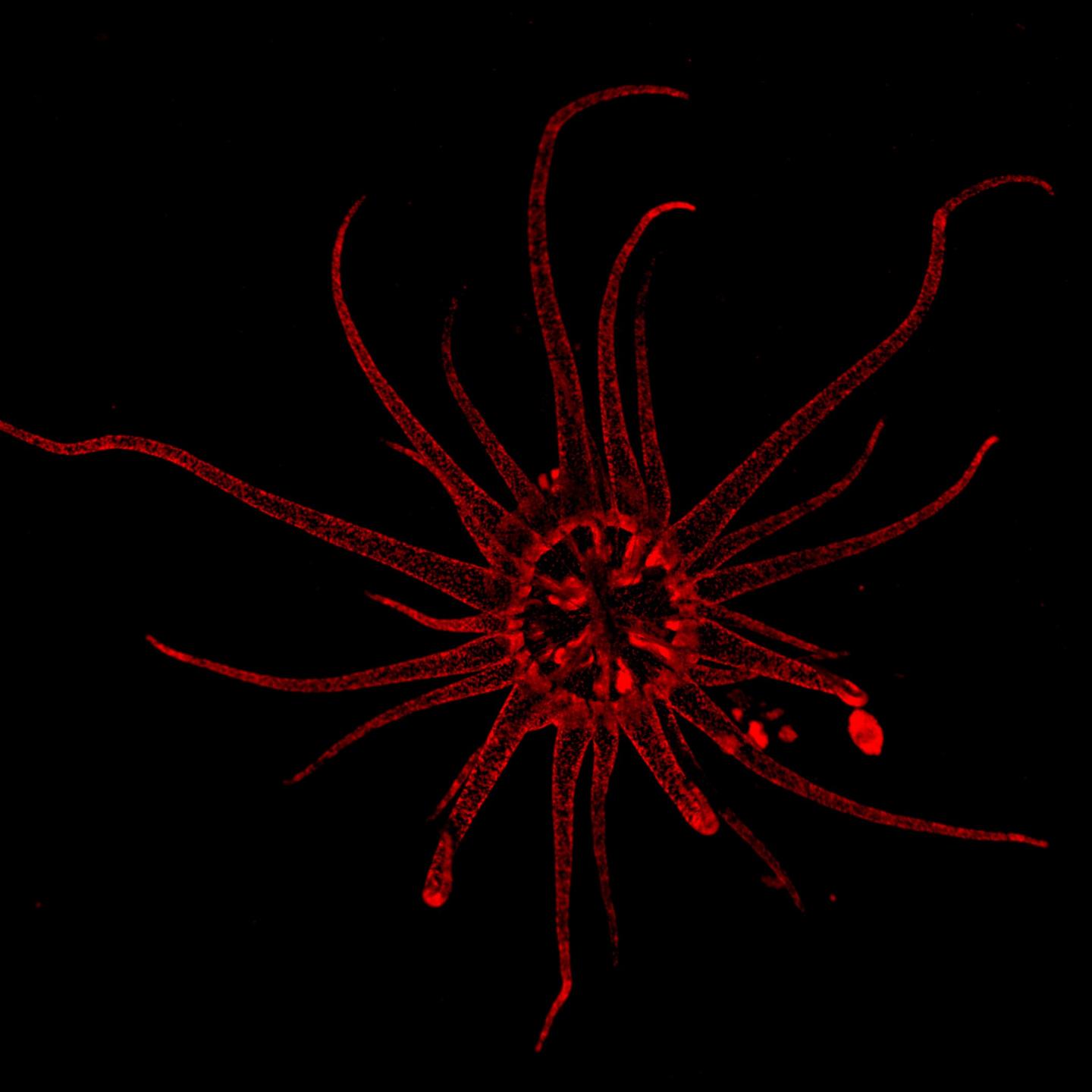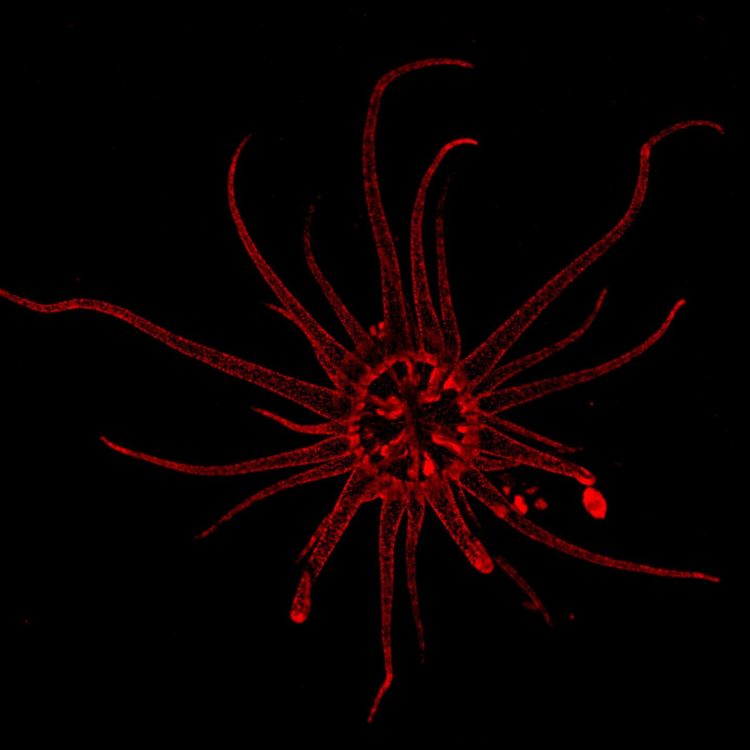New work indicates how sea anemones control the size of their algal populations that reside within their tissue

Credit: Photograph is courtesy of Tingting Xiang
Stanford, CA– Corals depend on their symbiotic relationships with the algae that they host. But how do they keep algal population growth in check? The answer to this fundamental question could help reefs survive in a changing climate.
New work published in Nature Communications by a team including Carnegie’s Tingting Xiang, Sophie Clowez, Rick Kim, and Arthur Grossman indicates how sea anemones, which are closely related to coral, control the size of their algal populations that reside within their tissue.
Like corals, anemones host photosynthetic algae, which can convert the Sun’s energy into chemical energy. An alga shares some of the sugars that it produces with its anemone or coral hosts, which in turn provide the alga with other necessary nutrients such as carbon dioxide, phosphorus, sulfur, and nitrogen.
The molecular mechanisms underlying this relationship have remained mysterious.
“We are eager to understand the precise interactions between the alga and its host because if algal populations within the host disappear–as happens during bleaching events caused by ocean warming or pollution–the corals and anemones lose access to vital sustenance and may not be able to survive. On the flip side, rampant population growth of symbiotic algae could overtax the hosts’ metabolism and make them susceptible to disease.” Grossman explained. “We want to understand how corals and anemones maintain a balance, which may enable us to assist threatened reef communities.”
The researchers–including Stanford University’s Erik Lehnert, Jan DeNofrio, and John Pringle, as well as UC Riverside’s Robert Jinkerson–revealed that limiting the supply of shared nitrogen is key to an anemone’s ability to control the size of its symbiotic algal population.
The team demonstrated that as the populations of the symbiotic alga Breviolum minutum, hosted by the anemone Exaiptasia pallida, reached high densities, they expressed elevated levels of cellular products specifically associated with nitrogen limitation. This is the same behavior that is observed in free-living algae that are growing outside of the host when available nitrogen in their environment becomes scarce.
Crucially, as the population of algae within the host tissue increases, they deliver more and more photosynthetically produced sugars to the anemone. The anemones can then use the carbon backbones of these molecules to retain and recycle its nitrogen-containing ammonium waste. This arrangement both results in more robust anemone growth and limits the amount of nitrogen available to the algae. So, the team demonstrated that the dynamics of nutrient exchange between the algae and the anemone change as the algal population increases, which is the key to understanding algal population control within the host.
“Our work elucidates how the association between anemones and algae, or coral and algae, ensures that this symbiotic relationship remains stable and beneficial to both partner organisms,” said lead author Xiang, who is now an assistant professor at UNC Charlotte. “With ongoing research, we hope to even better understand the various mechanisms and specific regulators that are crucial for integrating the metabolisms of these two organisms, which could eventually allow for the transplantation of hardier algae into bleached coral and also for manipulating both corals and algae to have greater tolerance to adverse conditions.”
###
This work was supported by the Gordon and Betty Moore Foundation.
High-throughput sequencing was performed by the Stanford Genome Sequencing Service Center of the Stanford Center for Genomics and Personalized Medicine, which is supported by the U.S. National Institutes of Health.
The Carnegie Institution for Science (carnegiescience.edu) is a private, nonprofit organization headquartered in Washington, D.C., with six research departments throughout the U.S. Since its founding in 1902, the Carnegie Institution has been a pioneering force in basic scientific research. Carnegie scientists are leaders in plant biology, developmental biology, astronomy, materials science, global ecology, and Earth and planetary science.
Media Contact
Arthur Grossman
[email protected]
Related Journal Article
http://dx.





